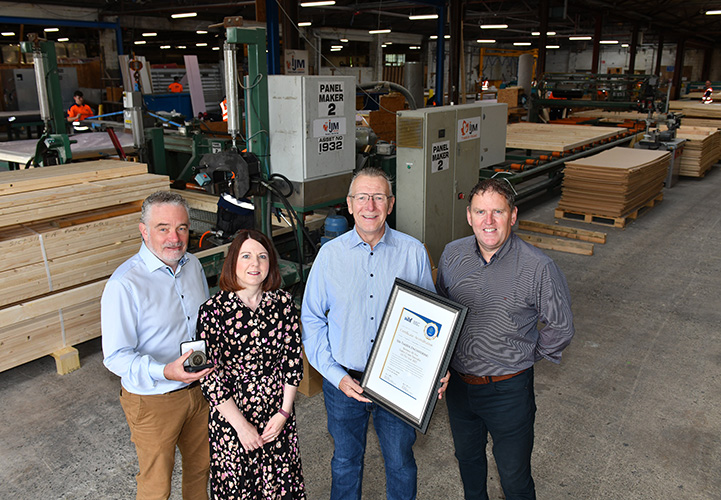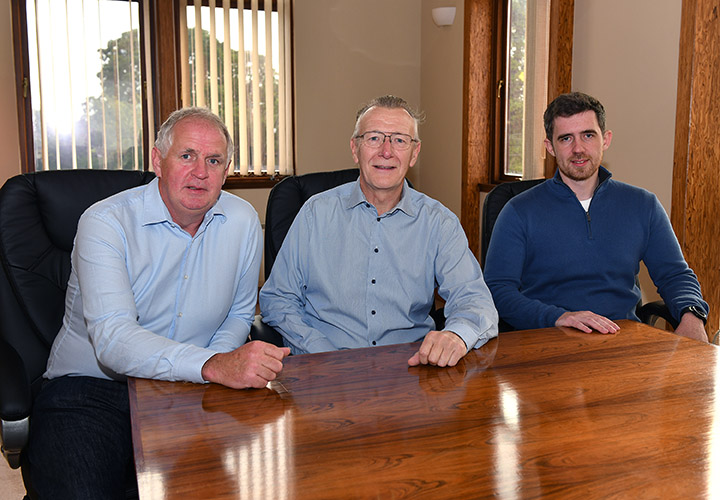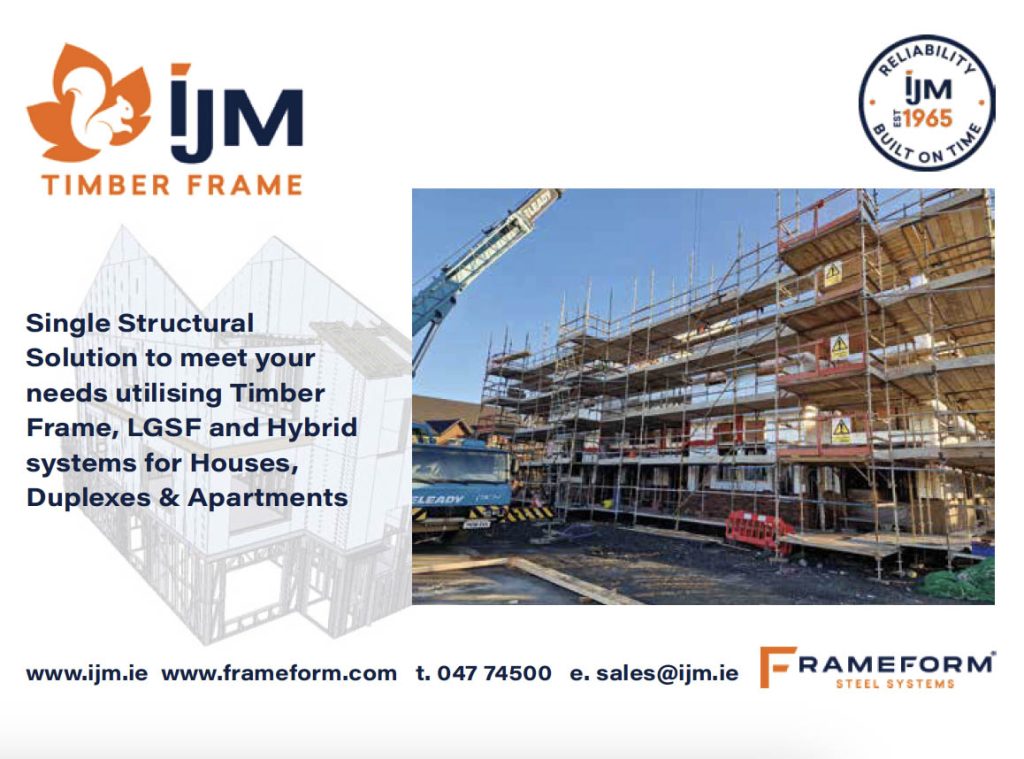Timber frame manufacturer IJM Timber Engineering and LGSF producer Frameform Steel Systems are affiliated companies that have combined their resources to provide developers and builders of large-scale residential schemes with low and high-rise cost-effective housing solutions.

As the construction process evolves, innovation and collaboration have become crucial to meet the growing demands for sustainable, efficient, and costeffective building solutions. IJM Timber Engineering, Ireland’s longest-established timber frame manufacturer providing timber frame solutions to its customers since 1965, and Frameform Steel Systems, whose team have over 30 years of experience producing light-gauge steel framing (LGSF) systems, are two companies at the forefront of this movement, offering quality, off-site solutions that are transforming the way buildings are constructed.
By combining their expertise in timber frame manufacturing and LGSF, these companies have created a powerful synergy that enhances customer service and revolutionises the construction process. While IJM has a long record of producing quality timber frame systems for houses and other low-rise buildings, Frameform manufactures LGSF systems for multioccupancy buildings, such as apartments up to 10 storeys in height. Working together, the companies also offer a hybrid LGS timber frame solution for three-storey duplexes with a concrete slab over ground-floor apartments.

IJM & Frameform Systems Benefits
The collaboration between IJM Timber Engineering and Frameform Steel Systems has presented a unique opportunity to leverage the combined benefits of timber and LGSF solutions. Integrating these systems within a programmed, off-site approach has proven to be hugely advantageous to their customers by addressing the following:
- Critical Path – Customers benefit from a unified solution that covers the entire spectrum of structural requirements. A single team will handle all aspects of their project, ie, the design, manufacturing, and installation of all structures, resulting in a lean, streamlined solution for houses, apartments, and duplexes.
- Enhanced Flexibility – The combined use of timber and LGSF allows for greater design flexibility, enabling architects and engineers to push the boundaries of creativity while ensuring structural integrity. The versatility of these materials allows for the construction of various building types, from houses and multi-occupancy buildings to commercial and light industrial structures.
- Speed and Efficiency – The off-site manufacturing processes employed by both companies significantly reduce construction timeframes. By fabricating components in controlled factory environments, the risks of weather-related delays and on-site issues are minimised. Moreover, the precise nature of manufacturing ensures a high level of quality control and reduces the need for rework.
- Sustainability: Both timber and LGSF are sustainable building materials. Timber is a renewable resource, while LGSF is easily recyclable. By utilising these materials, the collaboration between IJM Timber Engineering and Frameform Steel Systems contributes to the industry’s shift towards environmentally-friendly construction practices, reducing carbon footprints and promoting a greener future.
- Cost-Effectiveness: Off-site construction methodologies inherently lead to cost savings due to negating many preliminaries, reducing labour requirements, decreasing material waste, and shortening construction timelines. The synergy between IJM Timber Engineering and Frameform Steel Systems further enhances these advantages, offering customers a competitive edge in terms of affordability without compromising on quality.
Peter McCaughey heads up both companies and says the goal is to offer customers the most cost-effective and efficient system to meet their needs.
“Whether producing timber or steel systems for houses, apartments or other building types, the process of designing and producing the materials for the frames is pretty much the same. The main difference apart from the materials is that timber frame is insulated from the inside out, while steel frame is insulated from the outside in. The programming process is pretty much all the same, so there are great synergies between both systems.”
He adds, “A growing number of customers are seeing this as a win-win situation, not only are they reducing the number of steps to production, they are also making a huge cost saving and speeding up the construction process on site.”

The Frameform Steel Frame Building System
Frameform Steel Frame Building System has an NSAI Agrément certificate to be used in the construction of buildings up to 10 storeys (maximum 30 metres) in height to the top storey in purpose groups 1(a), 1(b), 1(c), 1(d), 2(a), 2(b), 3, 4(a) and 5 as defined in TGD to Part B Volume 1 and Volume 2 of the Building Regulations. This means the system complies with national and international passive fire resistance standards.
Gerry McCarthy, who has been pioneering LGSF since the mid-’90s, has said, “We are very excited about the connection with IJM that will allow for the implementation of the lean manufacturing processes, developed over many years by IJM, to be easily integrated into the relatively new 75,000-sq foot production facility that Frameform has in Dundalk.”
Early Project Involvement
To maximise the benefits, it is highly desirable for IJM and Frameform to engage with the design team in the earliest stages of the design process, ideally before commencing any construction drawings. However, with their employment of cutting-edge technology and interconnected ERP and CAD systems, both IJM and Frameform possess the flexibility to accommodate drawings at any point, enabling them to tailor the designs according to their customers’ requirements.
In conclusion, Peter McCaughey says, “I am extremely enthusiastic about the improved service we will offer our customers through the integration of expertise and the shared mission of both companies where they embrace operational excellence in the on-time delivery of sustainable building structures and continuously innovate to streamline the on-site Construction process.” He firmly believes the team can build upon IJM’s well-established reputation for “Reliability – Built on time”.
To learn more, visit www.ijmtimberframe.com





